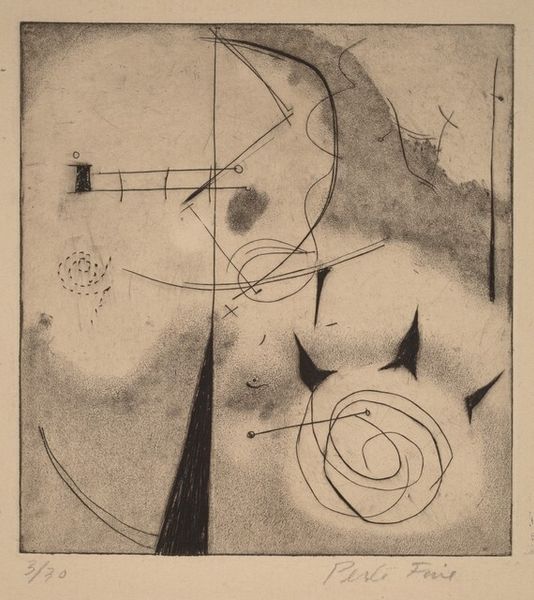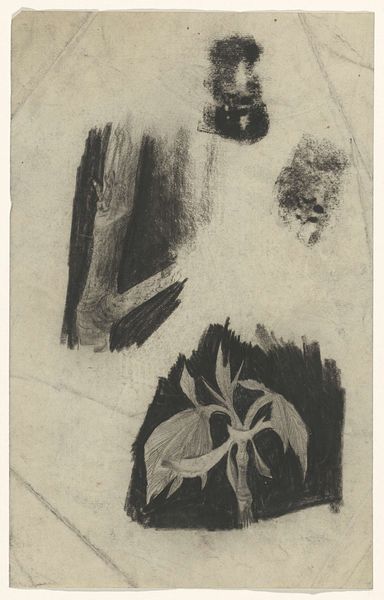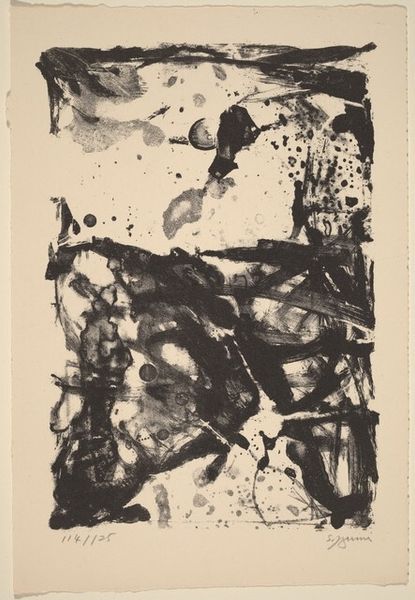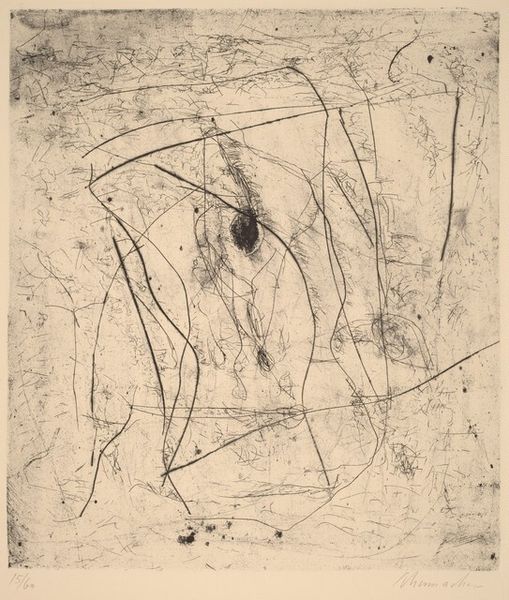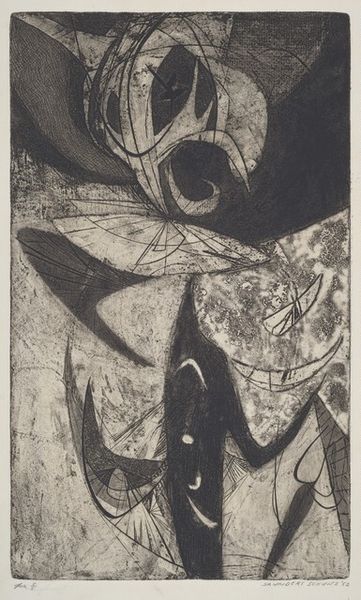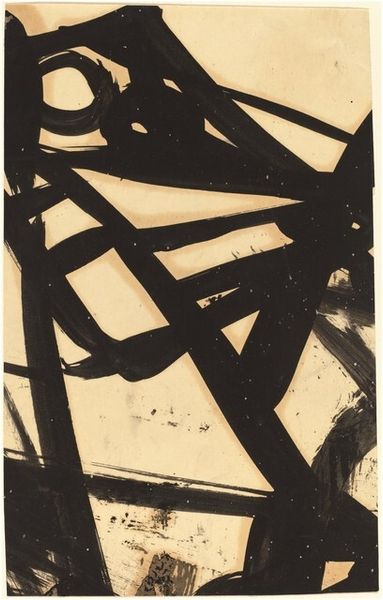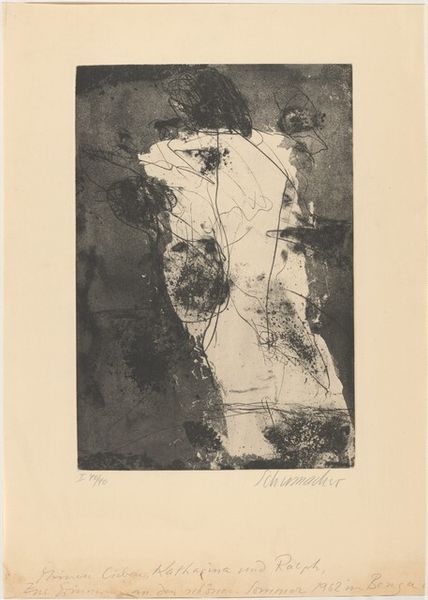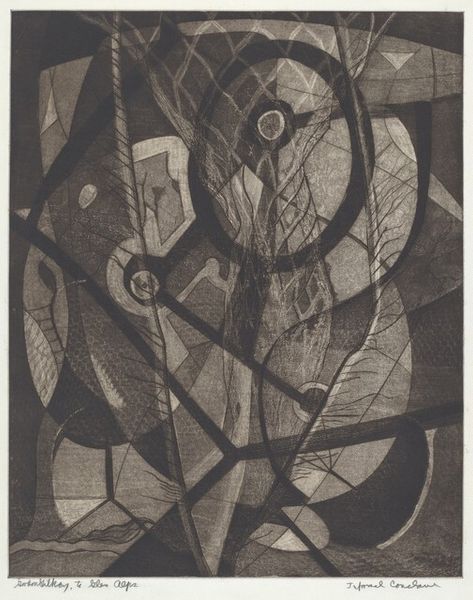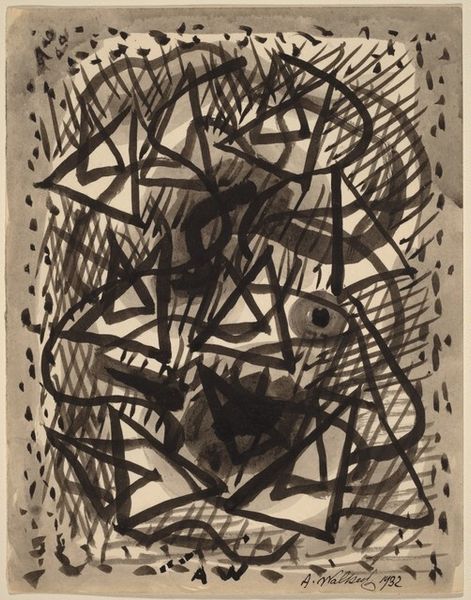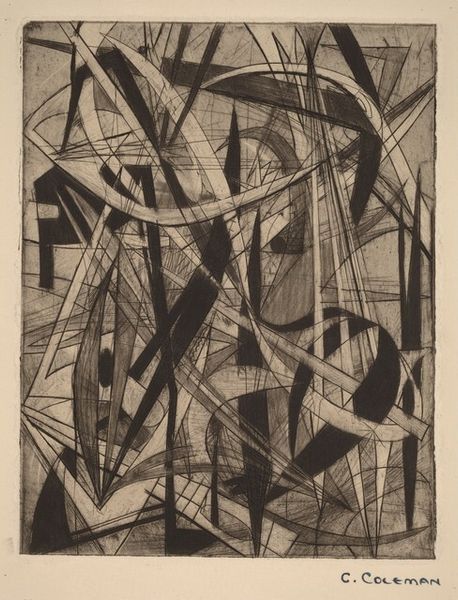
print, etching
#
abstract-expressionism
# print
#
etching
#
form
#
abstraction
#
line
Dimensions: image: 200 x 149 mm paper: 292 x 241 mm
Copyright: National Gallery of Art: CC0 1.0
Editor: This is "Carrousel," an etching by Perle Fine from around 1944. It's a print, and looking at all those lines and shapes, it feels… chaotic, almost unsettling. What do you see in this piece? Curator: The chaos is intentional, I think. Looking at Fine’s work through the lens of Abstract Expressionism and the historical moment in which it was produced, we can consider it a response to the anxieties and uncertainties of World War II. There’s a deliberate dismantling of form here, isn't there? The conventional idea of a 'carrousel', something joyful, is replaced with fragmented shapes. Editor: Absolutely. I hadn't considered the war's influence. I was stuck on just the visual discord. So, you’re saying it's less about depicting something literal and more about expressing a feeling? Curator: Precisely. It’s about evoking a feeling. Perle Fine was a woman working in a male-dominated art world, so her move toward abstraction can also be seen as a way to subvert expectations and assert her own artistic language, refusing to be confined by traditional representation. Do you notice anything about the symbolism inherent to abstract art and its power? Editor: It's almost as if the chaos itself becomes a statement. By not depicting a recognizable subject, Fine forces us to confront the underlying anxieties. Curator: Yes. What might have been at play, not just for Fine, but for other women artists in her circle like Lee Krasner, was exploring abstraction not simply as a stylistic choice but as a potential form of resistance against conventional gender roles, creating a space of art that defied traditional modes. It's an invitation, wouldn’t you say? Editor: It's a perspective shift for me. I came in seeing just visual fragmentation, but now I see it as a powerful articulation of social context, individual anxieties, and perhaps even, quiet rebellion. Curator: And hopefully, understanding a piece through these critical frameworks enriches not only how we experience the piece but also deepens our historical context of that time and the works' importance and place in that period.
Comments
No comments
Be the first to comment and join the conversation on the ultimate creative platform.
